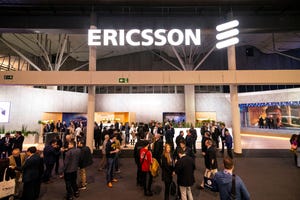Boston TV station to test 5G broadcast platform
WWOO-LD, a low-power TV station in Boston, is seeking an experimental license from the FCC to test a 5G broadcast system that can connect to Qualcomm-equipped smartphones and receivers to 5G-enabled UHF signals.

Multiple initiatives have explored using ATSC 3.0, the next-gen broadcast TV signaling standard, to bring to bear a new, national over-the-air IP pipe. But, so far, those promises have yet to evolve into tangible, real-world breakthroughs.
Meanwhile, there's a new angle being explored that aims to combine over-the-air TV broadcasting with 5G.
A group of broadcast industry vets hope to turn that idea into reality by enabling potentially thousands of low-power TV (LPTV) stations to broadcast 5G signals. That, in turn, would put the effort in position to utilize the global 5G standard rather than the more regionally focused ATSC 3.0 standard.
The idea has grand ambitions but will start small. On June 12, Boston-based LPTV station WWOO-LD filed for an experimental license with the Federal Communications Commission (FCC) to test a 5G broadcast system. The system, which will use UHF frequencies, will deliver data one-way (downstream-only) and aim to complement existing interactive 5G cellular networks.
Backers of the project believe that LPTV is uniquely suited to deliver a national 5G broadcast network. Full-power TV stations cover most of the US population, but have some coverage gaps in rural areas. LPTV, created by the FCC in 1982 to provide broadcast TV opportunities in rural areas or parts of larger urban areas, provides full national coverage, including rural.
Supplementing, not competing with, the 5G mobile network
Early on, the aim is to test 5G broadcast with first responders and to deliver a stream of video programming – potentially the feed of a local broadcaster.
5G broadcast is not designed to compete with 5G mobile networks, but to provide supplemental downloads, backers say. 5G broadcast's one-to-many distribution model, for example, could be used to distribute live sports and other types of programming that draw big audiences – the kind of content that can put stress on mobile 5G networks if that content was delivered via a multitude of unicast streams.
"This is not competition to the wireless network," said Preston Padden, a TV industry vet who currently serves as chief strategic officer of the Low Power TV Broadcasters Association (LPTVBA).
The general idea was spawned as a way to develop a more robust business model for thousands of low-power TV stations that provide national coverage, Padden explained.
Though backers of ATSC 3.0 have tried to become part of the 3GPP protocol for devices, those efforts have so far fallen short. 5G broadcast is already tied into the 3GPP, but the bigger news is 3GPP's approval last week of UHF frequencies in a new 108 band (480MHz-608MHz), Padden said.
3GPP support a 'game-changer'
Together, that gives LPTV stations a potential path forward to use the 5G standard to deliver complementary downstream data, potentially nationwide, to mobile phones, tablets, cars and other 5G-capable receiving devices.
"It's unbelievably huge ... It's a game-changer," Padden said of the 3GPP's blessing alongside the advocacy of Qualcomm, a chipmaker that already has 5G broadcast projects underway in other regions of the world, including South America, Europe and Asia.
Another big piece of the puzzle is XGen Network, a company formed by "SuperFrank" Copsidas, founder of the LPTVBA (and former manager of the late singer James Brown), and Bill Christian, a fellow broadcast industry vet who owns WWOO-LD. Copsidas and Christian own 20 LPTV stations between them.
XGen's plan is to act as a broker for the 5,300 or so US LPTV stations, creating a one-stop shop for wireless carriers and content owners that want to participate in the 5G broadcast platform. Discussions with other LPTV station owners are in the early stages.
5G broadcast to mobile devices and set-tops
For the anticipated trial, Qualcomm will supply Android phones with software updates that adapt to 5G broadcast by filtering in the UHF frequencies. Xgen expects an initial batch of such smartphones to arrive in the coming weeks. The company already has receivers and set-tops equipped to receive the 5G broadcast signals in-hand, Copsidas said.
Rohde & Schwarz (for 5G tech) and Ateme (video encoding) are among other suppliers that will be involved in the Boston trial, pending FCC approval.
Copsidas said the Boston test will serve as a proof of concept to learn and to explore the challenges of 5G broadcast via LPTV before heading to the next step.
It's not clear when the FCC might green-light WWOO-LD's experimental license. But the application received "favorable reception" when it was recently discussed with FCC Commissioners and Holly Saurer, chief of the media bureau and legal advisor to Chairwoman Jessica Rosenworcel, Padden said.
Related posts:
Boston low-power TV station to test 5G broadcast platform (press release)
— Jeff Baumgartner, Senior Editor, Light Reading
About the Author(s)
You May Also Like












